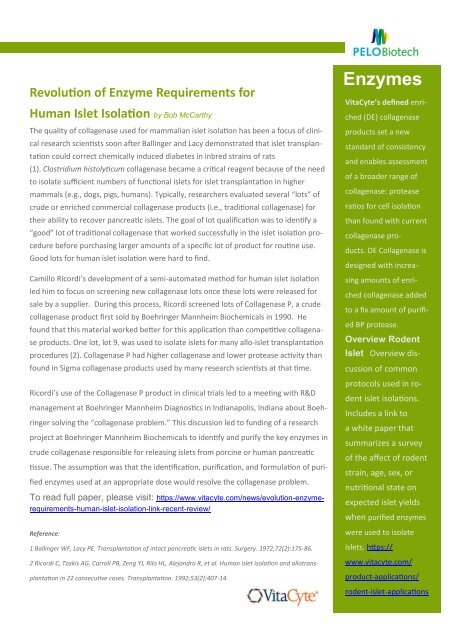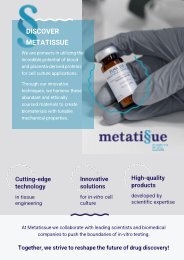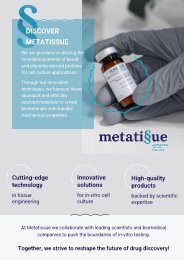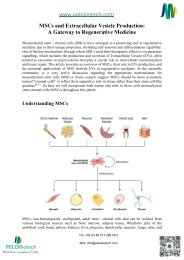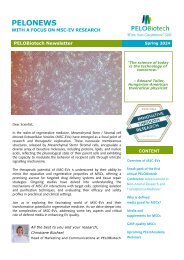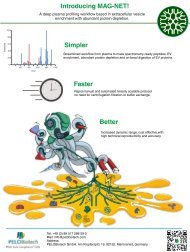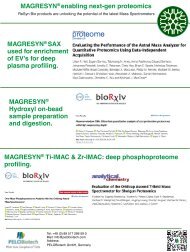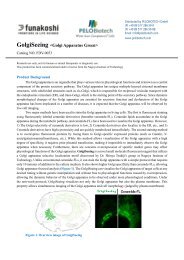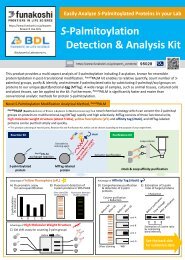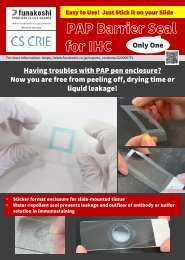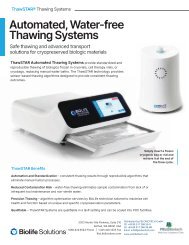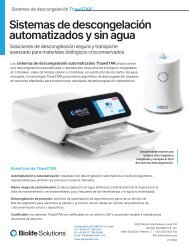PeloNews with Focus on Liver/Islets
Dive into your monthly PELONews and read some exciting scientific stuff as... New Liver/Pancreas 2D/3D models for Cancer research, Drug Discovery & more Discover ECMs&Hydrogels for liver, pancreas &more #drugdiscovery #extracellularmatrix NEW Media for 2D/3D Human Hepatocytes Revolution of Enzyme Requirements for Human Islet Isolation Reducing the Cost of Human Islet Isolation DNs-Rh: fluorogenic substrate for GSTs Trabecular Meshwork Cells NEW Sales Contact in France
Dive into your monthly PELONews and read some exciting scientific stuff as...
New Liver/Pancreas 2D/3D models for Cancer research, Drug Discovery & more
Discover ECMs&Hydrogels for liver, pancreas &more #drugdiscovery #extracellularmatrix
NEW Media for 2D/3D Human Hepatocytes
Revolution of Enzyme Requirements for Human Islet Isolation
Reducing the Cost of Human Islet Isolation
DNs-Rh: fluorogenic substrate for GSTs
Trabecular Meshwork Cells
NEW Sales Contact in France
Create successful ePaper yourself
Turn your PDF publications into a flip-book with our unique Google optimized e-Paper software.
Revoluti<strong>on</strong> of Enzyme Requirements for<br />
Human Islet Isolati<strong>on</strong> by Bob McCarthy<br />
The quality of collagenase used for mammalian islet isolati<strong>on</strong> has been a focus of clinical<br />
research scientists so<strong>on</strong> after Ballinger and Lacy dem<strong>on</strong>strated that islet transplantati<strong>on</strong><br />
could correct chemically induced diabetes in inbred strains of rats<br />
(1). Clostridium histolyticum collagenase became a critical reagent because of the need<br />
to isolate sufficient numbers of functi<strong>on</strong>al islets for islet transplantati<strong>on</strong> in higher<br />
mammals (e.g., dogs, pigs, humans). Typically, researchers evaluated several “lots” of<br />
crude or enriched commercial collagenase products (i.e., traditi<strong>on</strong>al collagenase) for<br />
their ability to recover pancreatic islets. The goal of lot qualificati<strong>on</strong> was to identify a<br />
“good” lot of traditi<strong>on</strong>al collagenase that worked successfully in the islet isolati<strong>on</strong> procedure<br />
before purchasing larger amounts of a specific lot of product for routine use.<br />
Good lots for human islet isolati<strong>on</strong> were hard to find.<br />
Camillo Ricordi’s development of a semi-automated method for human islet isolati<strong>on</strong><br />
led him to focus <strong>on</strong> screening new collagenase lots <strong>on</strong>ce these lots were released for<br />
sale by a supplier. During this process, Ricordi screened lots of Collagenase P, a crude<br />
collagenase product first sold by Boehringer Mannheim Biochemicals in 1990. He<br />
found that this material worked better for this applicati<strong>on</strong> than competitive collagenase<br />
products. One lot, lot 9, was used to isolate islets for many allo-islet transplantati<strong>on</strong><br />
procedures (2). Collagenase P had higher collagenase and lower protease activity than<br />
found in Sigma collagenase products used by many research scientists at that time.<br />
Ricordi’s use of the Collagenase P product in clinical trials led to a meeting <str<strong>on</strong>g>with</str<strong>on</strong>g> R&D<br />
management at Boehringer Mannheim Diagnostics in Indianapolis, Indiana about Boehringer<br />
solving the “collagenase problem.” This discussi<strong>on</strong> led to funding of a research<br />
project at Boehringer Mannheim Biochemicals to identify and purify the key enzymes in<br />
crude collagenase resp<strong>on</strong>sible for releasing islets from porcine or human pancreatic<br />
tissue. The assumpti<strong>on</strong> was that the identificati<strong>on</strong>, purificati<strong>on</strong>, and formulati<strong>on</strong> of purified<br />
enzymes used at an appropriate dose would resolve the collagenase problem.<br />
To read full paper, please visit: https://www.vitacyte.com/news/evoluti<strong>on</strong>-enzymerequirements-human-islet-isolati<strong>on</strong>-link-recent-review/<br />
Reference:<br />
1 Ballinger WF, Lacy PE. Transplantati<strong>on</strong> of intact pancreatic islets in rats. Surgery. 1972;72(2):175-86.<br />
2 Ricordi C, Tzakis AG, Carroll PB, Zeng YJ, Rilo HL, Alejandro R, et al. Human islet isolati<strong>on</strong> and allotransplantati<strong>on</strong><br />
in 22 c<strong>on</strong>secutive cases. Transplantati<strong>on</strong>. 1992;53(2):407-14.<br />
Enzymes<br />
VitaCyte’s defined enriched<br />
(DE) collagenase<br />
products set a new<br />
standard of c<strong>on</strong>sistency<br />
and enables assessment<br />
of a broader range of<br />
collagenase: protease<br />
ratios for cell isolati<strong>on</strong><br />
than found <str<strong>on</strong>g>with</str<strong>on</strong>g> current<br />
collagenase products.<br />
DE Collagenase is<br />
designed <str<strong>on</strong>g>with</str<strong>on</strong>g> increasing<br />
amounts of enriched<br />
collagenase added<br />
to a fix amount of purified<br />
BP protease.<br />
Overview Rodent<br />
Islet Overview discussi<strong>on</strong><br />
of comm<strong>on</strong><br />
protocols used in rodent<br />
islet isolati<strong>on</strong>s.<br />
Includes a link to<br />
a white paper that<br />
summarizes a survey<br />
of the affect of rodent<br />
strain, age, sex, or<br />
nutriti<strong>on</strong>al state <strong>on</strong><br />
expected islet yields<br />
when purified enzymes<br />
were used to isolate<br />
islets. https://<br />
www.vitacyte.com/<br />
product-applicati<strong>on</strong>s/<br />
rodent-islet-applicati<strong>on</strong>s


